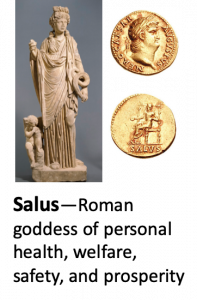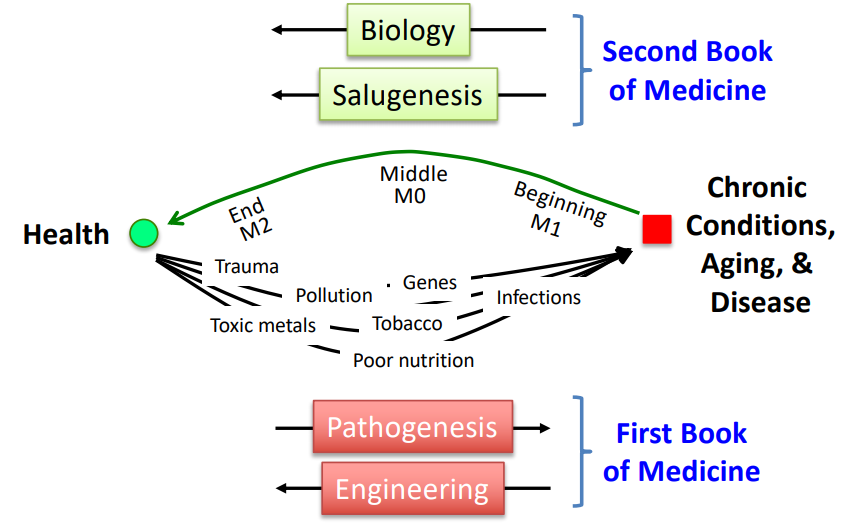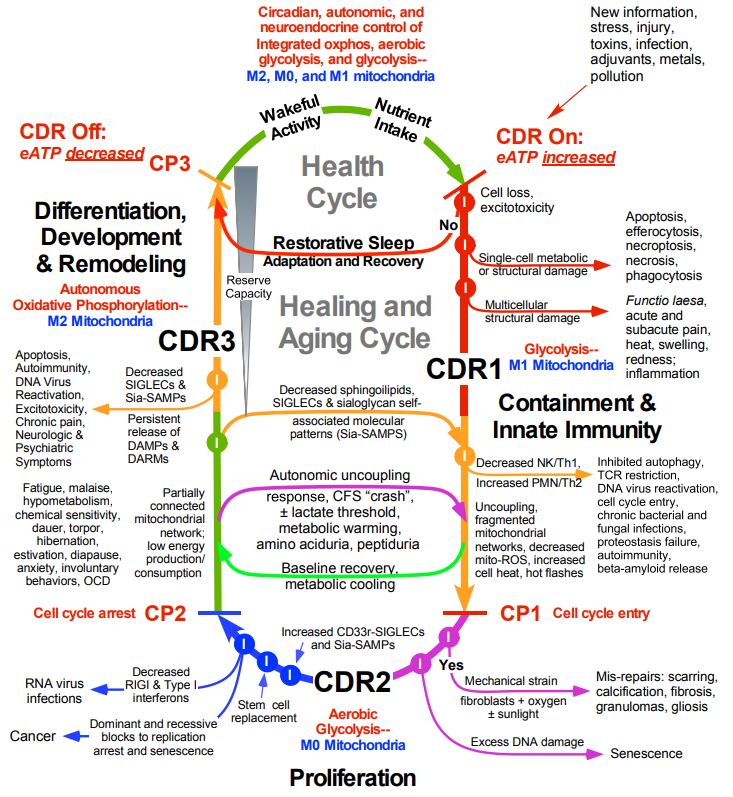
Figure 1. Silos of Knowledge. Study of a single disease can show how it is different from all other diseases. However, it is knowledge of how complex disorders are the same that will lead to new cures of disorders that were previously thought to be permanent and irreversible. Abbreviations: CDR—cell danger response, ME/CFS—myalgic encephalomyelitis/chronic fatigue syndrome, GWI—Gulf War Illness, PTSD—post-traumatic stress disorder, TBI—traumatic brain injury, PANDAS—pediatric acute neurologic disorder associated with streptococcal infection.
Introduction
An introduction to the concepts on this web page, with a focus on chronic fatigue syndrome, can be viewed in the video link of a lecture given at NIH by Dr. Naviaux below time stamped: 55:00 to 1:28:15:
Video Link: https://www.youtube.com/watch?v=1emsA2CcRK4
Writing A Second Book of Medicine
For 5,000 years of written history, medicine has been focused on the treatment of acute injuries from trauma, infections, and poisoning1. This is the topic of the First Book of Medicine (“Book I”). The First Book of Medicine is taught to every physician and biomedical scientist in the 21st Century. However, if an injury or illness is not healed in 6 months, it is considered a chronic illness, and the rules of acute care medicine no longer suffice. To treat chronic illness effectively, we need a new book of medicine. The treatment and prevention of chronic illness is the focus of the Second Book of Medicine (“Book II”).
The rules that doctors learn to care for acute illness in Book I depend critically on the mechanisms and the pathway of the healing cycle to be intact. If death or serious deformity can be prevented in the first days or weeks after an acute illness, then the process of healing will lead the patient back to health and chronic illness can be prevented. The process of healing was so reliable in past centuries that modern physicians and scientists have not studied it well enough to know how to alter the outcome of a healing cycle once it has been disrupted. Today, the rising tide of environmental chemicals and manmade changes in the human environment have conspired to impose blocks on the process of healing. When blocks to healing occur, chronic illness results. Now 40% of children and 60% of adults must live with a chronic illness (see: http://naviauxlab.ucsd.edu/the-28th-amendment-project/)
Many different triggers, including both genetic and environmental factors, can lead to a chronic illness. The process of disease formation is called “pathogenesis” (Figure 2). Virtually all the resources of biomedical research organizations around the world have tried to tackle the problem of chronic illness by cataloging the triggers and molecular mechanisms that derail the health cycle, and produce chronic diseases like diabetes, heart disease, cancer, and dementia. Once a trigger is found, a strategy is engineered to turn the trigger off or to reduce its effects. This engineering approach to disease effectively attempts to “reverse the tape of pathogenesis” in order to treat the illness (Figure 2).
Research in the Naviaux Lab has led us to the conclusion that a simple removal of a trigger, or treatment of a target that appears to be the “cause” of a symptom in a chronic disease, almost never leads to a cure. Instead, the symptom is palliated, but at the cost of having to take a medicine for life in order to keep that symptom in check. For example, insulin does not cure diabetes, and statins do not cure high cholesterol. These “pathogenesis-based” treatments almost never allow a person to shed their chronic disease and return to a drug-free state of health. Why?
Salugenesis
The steps required for healing are not accomplished simply by “reversing the tape” of pathogenesis (Figure 2). Surprisingly, there is no name that describes the molecular stages and dynamics of healing. This void in our language has slowed scientific progress in understanding the mechanisms of healing. 
Scientists cannot hold sharp focus on a problem unless they give it a name. The word “salugenesis” comes from the Latin root, Salus, the Roman goddess of health, safety, and prosperity (Figure 2). This new word is meant to refer to the evolutionarily conserved, and highly choreographed sequence of molecular steps that comprise the healing cycle (Figure 3).
There is a related word, “salutogenesis” that was coined by the Israeli-American medical sociologist, Aaron Antonovsky (1923-1994)2-4 to describe the lifestyle choices and coping skills that were associated with the production and preservation of health despite sociologic, economic, or environmental hardships. Salugenesis is not the same as salutogenesis. Salugenesis refers to molecular, metabolic, and cellular features of the healing cycle (Figures 2 and 3). Both salutogenesis and salugenesis refer to the integrative process of self-organization, regeneration, and restoration required for health. These processes redirect cellular energy to oppose and reverse the arrow of entropy. Pathogenesis, on the other hand, is a disintegrative process that disrupts the biological systems that characterize health, and lead to disorganization and an increase in entropy.
 |
| Figure 2. Salugenesis is Not the Reverse of Pathogenesis. Thousands of mechanisms have been identified that destroy health and lead to chronic illness. This is the study of “pathogenesis”—the mechanisms that lead from health to chronic illness, from left to right above. Finding a trigger and removing it or treating it to reverse the tape of pathogenesis uses engineering principles to treat disease. These principles are form the basis of the First Book of Medicine. However, only one major pathway has evolved in all plants and animals that allows injuries of any kind to be contained and healed. Salugenesis is the pathway that leads from right to left, from illness back to health. Finding the factors that block normal healing and removing them, and using salugens to promote and restore normal healing uses biological principles to treat disease. These principles will form the basis of the Second Book of Medicine. M1, M0, and M2 refer to different kinds of mitochondria that are needed for each stage of healing. |
Although salugenesis and salutogenesis differ by referring to molecular vs life-style scale events, respectively, their conceptual origin is the same; the path to health proceeds by different mechanisms than the path to disease (Figure 2). The term salutology has been used to refer to the systematic study of both molecular and lifestyle factors that promote and preserve health of mind and body5.
Salugens
Just as the search for “pathogens” that trigger disease has led to important medical advances, our lab believes that the search for “salugens” will lead to a revolution in medical treatments. Salugens are interventions that promote the completion of the healing cycle, restore health, decrease mortality, and create heightened states of health and resilience. Salugens create an integrated, multisystem resistance to future chronic illness. Salugens need not be restricted to drugs. Exercise is a salugen6. Adaptogens are salugens7. Certain electrophysiologic interventions designed to promote healing associated with slow wave sleep are salugens8. Given the importance of the search for and study of salugens, a strong case can be made for applying one of the new terms “Salogy” or “Salugenology” for this new branch of medical science. Only time will tell how the terms, Salogy, Salutology, or Salugenology will help to sharpen the focus of this new branch of medicine and help to distinguish it from the related but distinct medical discipline of Pathology.
The Healing Cycle
The molecular, metabolic, cellular, autonomic, and neuroendocrine steps that are activated by injury occur as an ontogenetically programmed sequence that underlies both the process of healing1, 9 and aging10. The healing cycle is illustrated in Figure 3.
 |
| Figure 3. The Healing Cycle. Once the cell danger response (CDR) is activated by any stress of injury, a stereotyped and programmed sequence of events is initiated that enables healing from almost any injury. Like the cell cycle, the steps of the healing cycle cannot be skipped or reversed. The mitochondrial and metabolic features of CDR1, CDR2, and CDR3 have been described in a recent review1. |
Three Different Kinds of Mitochondria
The three stages of the healing cycle are made possible by metabolic patterns that are produced by 3 different kinds of mitochondria. M1 mitochondria are proinflammatory. M0 mitochondria support Warburg metabolism, aerobic glycolysis, and cell growth. M2 mitochondria are anti-inflammatory and tumor suppressing. The role and characteristics of these different developmental forms of mitochondria has recently been reviewed1, 10, and new treatments have been developed that help promote these mitochondrial transitions11.
Environmental Impacts on Human Health
Environmental pollution has been found by a Lancet commission to be responsible for 940,000 deaths of children each year around the world12, 13. This pollution is the result of both a growing human population, and to the castoff of chemical waste from current farming and industrial practices used to support that population. New incentives are needed to stimulate green farming and industrial practices that can reduce this waste. Recent environmental monitoring efforts have shown that 42% of freshwater lakes and rivers in Europe now contain sufficient levels of toxins to cause chronic illness in plants and animals in and around those waterways14. Similar environmental monitoring efforts have not been done in the US, and many areas in India, China, and Africa have suffered similar trends in pollution that are causing chronic illness in children and adults. New technologies of metabolomics and exposomics15, 16 will need to be applied to create the databases needed for governments around the world to reverse these trends. Every citizen of the world deserves the right to be born into an environment that does not cause chronic disease (http://naviauxlab.ucsd.edu/the-28th-amendment-project/).
References
- Naviaux RK. Metabolic features and regulation of the healing cycle-A new model for chronic disease pathogenesis and treatment. Mitochondrion 2019; 46: 278-297.
- Antonovsky A. Health, stress, and coping. Jossey-Bass Inc., Publishers. 1979.
- Antonovsky A. Unraveling the mystery of health: How people manage stress and stay well. Jossey-Bass Inc., Publishers. 1987.
- Antonovsky A. The structure and properties of the sense of coherence scale. Soc Sci Med 1993; 36(6): 725-733.
- Charlton BG. A new science of health: salutology and the evolutionary perspective. QJM 1996; 89(3): 233-236.
- Hupin D, Roche F, Gremeaux V, Chatard JC, Oriol M, Gaspoz JM et al. Even a low-dose of moderate-to-vigorous physical activity reduces mortality by 22% in adults aged >/=60 years: a systematic review and meta-analysis. Br J Sports Med 2015; 49(19): 1262-1267.
- Panossian A, Wikman G. Evidence-based efficacy of adaptogens in fatigue, and molecular mechanisms related to their stress-protective activity. Current clinical pharmacology 2009; 4(3): 198-219.
- Huang MX, Swan AR, Quinto AA, Matthews S, Harrington DL, Nichols S et al. A pilot treatment study for mild traumatic brain injury: Neuroimaging changes detected by MEG after low-intensity pulse-based transcranial electrical stimulation. Brain Inj 2017; 31(13-14): 1951-1963.
- Naviaux RK, Le TP, Bedelbaeva K, Leferovich J, Gourevitch D, Sachadyn P et al. Retained features of embryonic metabolism in the adult MRL mouse. Molecular genetics and metabolism 2009; 96(3): 133-144.
- Naviaux RK. Incomplete Healing as a Cause of Aging: The Role of Mitochondria and the Cell Danger Response. Biology (Basel) 2019; 8(2).
- Naviaux RK. Antipurinergic therapy for autism-An in-depth review. Mitochondrion 2018; 43: 1-15.
- Landrigan PJ, Fuller R, Acosta NJR, Adeyi O, Arnold R, Basu NN et al. The Lancet Commission on pollution and health. Lancet 2018; 391(10119): 462-512.
- Landrigan PJ, Fuller R, Fisher S, Suk WA, Sly P, Chiles TC et al. Pollution and children’s health. Science of The Total Environment 2019; 650: 2389-2394.
- Malaj E, von der Ohe PC, Grote M, Kuhne R, Mondy CP, Usseglio-Polatera P et al. Organic chemicals jeopardize the health of freshwater ecosystems on the continental scale. Proceedings of the National Academy of Sciences of the United States of America 2014; 111(26): 9549-9554.
- Smith MT, de la Rosa R, Daniels SI. Using exposomics to assess cumulative risks and promote health. Environ Mol Mutagen 2015; 56(9): 715-723.
- Rattray NJW, Deziel NC, Wallach JD, Khan SA, Vasiliou V, Ioannidis JPA et al. Beyond genomics: understanding exposotypes through metabolomics. Hum Genomics 2018; 12(1): 4.

